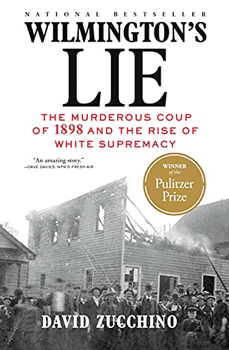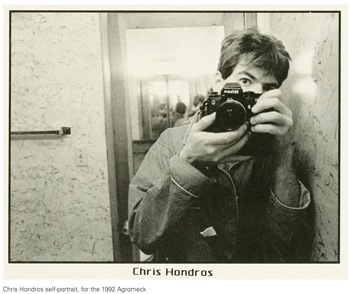 Thousands of people and families have cycled through our community over the years, some for a weekend, some for a few years and many with the military. Relatively few of us, however, have spent our formative years here, and even fewer of us have excelled on national and international stages like David Zucchino and Chris Hondros. Both are graduates of Terry Sanford High School, though decades apart, and both went on to become legends in their respective fields. They knew of each other but
Thousands of people and families have cycled through our community over the years, some for a weekend, some for a few years and many with the military. Relatively few of us, however, have spent our formative years here, and even fewer of us have excelled on national and international stages like David Zucchino and Chris Hondros. Both are graduates of Terry Sanford High School, though decades apart, and both went on to become legends in their respective fields. They knew of each other but
never met.
David Zucchino, a graduate of UNC-Chapel Hill, recently received his second Pulitzer Prize for “Wilmington’s Lie: The Murderous Coup of 1898 and the Rise of White Supremacy.” It is an examination of the only overthrow of an elected government in United States history. Blessedly, a more recent attempt, the January 6th insurrection in Washington, failed. Zucchino lays bare this heretofore little-known and shameful moment in our state and nation’s history. His first Pulitzer award came in 1989 for his series “Being Black in South Africa,” published in the Philadelphia Enquirer. I asked the author how growing up in our community shaped him, if it did at all, and he very kindly responded.
“I went to high school in Fayetteville after my father, a U.S. Army First Sergeant, was transferred to Fort Bragg. As a high school student, I spent several fascinating evenings trolling along Hay Street and taking in the heady mixture of strip clubs, juke joints, saloons, hookers, fistfights and drug dealers. People from all over the world were drawn to Fayetteville at the time, with the Vietnam War in full swing and the Army sending troops back and forth. For reasons that are still obscure, even to me, my exposure to that tawdry scene motivated me to travel the world and seek adventures in faraway places.”
I would love to have asked the same question of Chris Hondros, but he was killed in Syria in 2011. He was barely 41. An accomplished photographer from his teenage years on, Hondros became a war photojournalist who covered conflicts the world over, including in Liberia, Iraq, Kosovo, Angola, Sierra Leone and Afghanistan. He and a British filmmaker died in a mortar attack by Syrian government troops. His war photography graced the covers of Newsweek and The Economist, as well as the front pages of The New York Times, The Washington Post, and the Los Angeles Times. Some local residents remember Hondros as a photographer for the Fayetteville Observer in the late 1990s, but he was destined for the world theater. He remains on the world stage today in a riveting documentary, “Hondros,” currently available on Netflix, and in an exhibit of some of his photographs currently at the Gregg Museum of Art at NC State, Hondros’ alma mater. The photographs, given to the museum by Hondros’ employer, Getty Images, are both arresting and haunting as they record human behavior and its consequences. Several are familiar even if we did not know who took them. The centerpiece is Hondros’ photograph of a young Liberian government fighter leaping in jubilation as his troops prevail in battle. This well-known photo is one of two Hondros works that received Pulitzer nominations.
Every community has sons in whom it takes pride, but few have nurtured sons whose work has meaning to people they will never know which sheds light on people, events and issues that shape us and the world around us.
David Zucchino and Chris Hondros have both achieved that, and we are better for their work.
 Pictured Left: Chris Honros Self-portrait for the 1992 agromeck, NC State University.
Pictured Left: Chris Honros Self-portrait for the 1992 agromeck, NC State University.

 How to resolve AdBlock issue?
How to resolve AdBlock issue? 








